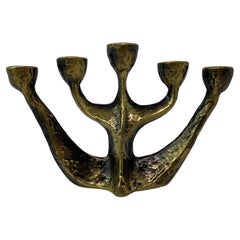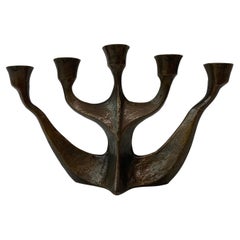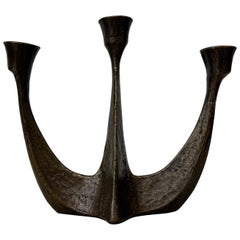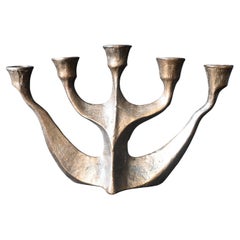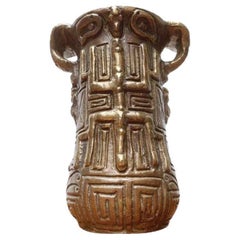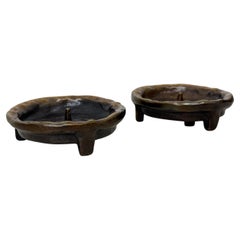Horst Dalbeck
Vintage 1970s German Brutalist Candlesticks
Bronze
Vintage 1970s German Brutalist Candlesticks
Bronze
Vintage 1970s German Brutalist Candlesticks
Bronze
Vintage 1960s German Mid-Century Modern Candlesticks
Bronze
20th Century German Brutalist Pottery
Bronze
Recent Sales
Vintage 1970s German Brutalist Candlesticks
Bronze
People Also Browsed
Mid-20th Century Austrian Scandinavian Modern Candelabras
Copper
2010s British Scandinavian Modern Ottomans and Poufs
Sheepskin, Oak
2010s Italian Modern Chandeliers and Pendants
Metal, Brass
Vintage 1960s Brutalist Chandeliers and Pendants
Brass
21st Century and Contemporary Indian Modern Candelabras
Brass
2010s Italian Mid-Century Modern Wall Mirrors
Brass
2010s Mexican Brutalist Wall-mounted Sculptures
Wood
20th Century Japanese Mid-Century Modern Decorative Bowls
Iron
Early 20th Century English Art Deco Fireplaces and Mantels
Wood
21st Century and Contemporary American Brutalist Abstract Sculptures
Iron
Vintage 1970s Mexican Mid-Century Modern Barware
Abalone
Vintage 1970s Canadian Night Stands
Wood
21st Century and Contemporary Indian Mid-Century Modern Side Tables
Wood
21st Century and Contemporary Italian Brutalist Dining Room Chairs
Beech
Vintage 1950s Italian Mid-Century Modern Ashtrays
Brass
21st Century and Contemporary Italian Mid-Century Modern Chandeliers and...
Brass
A Close Look at Brutalist Furniture
The design of brutalist furniture encompasses that which is crafted, hewn and worked by hand — an aesthetic rebuke (or, at least, a counterpoint) to furniture that is created using 21st-century materials and technology. Lately, the word “brutalist” has been adopted by the realms of furniture design and the decorative arts to refer to chairs, cabinets, tables and accessory pieces such as mirror frames and lighting that are made of rougher, deeply textured metals and other materials that are the visual and palpable antithesis of the sleek, smooth and suave.
ORIGINS OF BRUTALIST FURNITURE DESIGN
- Brutalism emerged during the mid-20th century
- Term coined by architecture critic Reyner Banham
- Originated in the United Kingdom
- Brutalist architecture gained popularity in the United States beginning in the early 1960s
- Inaugural brutalist projects include Unité d'habitation and the city of Chandigarh, India, both of which owe to influential architect Charles-Édouard “Le Corbusier” Jeanneret
- Le Corbusier’s cousin, Pierre Jeanneret, designed hundreds of chairs, tables, cabinets and lamps for Chandigarh
- Informed by the Bauhaus, constructivism, modernism and the International Style; part of mid-century modernism
- Contrasted starkly with Beaux Arts style
CHARACTERISTICS OF BRUTALIST FURNITURE DESIGN
- Use of industrial materials — tubular steel, concrete, glass, granite
- Prioritizes functionalism, minimalism and utilization of negative space
- Spare silhouettes, pronounced geometric shapes
- Stripped-down, natural look; rugged textures, modular construction
- Interiors featuring airy visual flow and reliance on neutral palettes
BRUTALIST FURNITURE DESIGNERS TO KNOW
VINTAGE BRUTALIST FURNITURE ON 1STDIBS
The term brutalism — which derives from the French word brut, meaning “raw” — was coined by architecture critic Reyner Banham to describe an architectural style that emerged in the 1950s featuring monumental buildings, usually made of unornamented concrete, whose design was meant to project an air of strength and solidity.
Le Corbusier essentially created the brutalist style; its best-known iterations in the United States are the Whitney Museum of American Art, which was designed by Marcel Breuer, and Paul Rudolph's Yale Art and Architecture Building. The severe style might have been the most criticized architectural movement of the 20th century, even if it was an honest attempt to celebrate the beauty of raw material. But while the brutalist government buildings in Washington, D.C., seemingly bask in their un-beauty, brutalist interior design and decor is much more lyrical, at times taking on a whimsical, romantic quality that its exterior counterparts lack.
Paul Evans is Exhibit A for brutalist furniture design. His Sculpture Front cabinets laced with high-relief patinated steel mounts have become collector's items nonpareil, while the chairs, coffee table and dining table in his later Cityscape series and Sculpted Bronze series for Directional Furniture are perhaps the most expressive, attention-grabbing pieces in American modern design. Other exemplary brutalist designers are Silas Seandel, the idiosyncratic New York furniture designer and sculptor whose works in metal — in particular his tables — have a kind of brawny lyricism, and Curtis Jere, a nom-de-trade for the California team of Curtis Freiler and Jerry Fels, the bold makers of expressive scorched and sheared copper and brass mirror frames and wall-mounted sculptures.
Brutalist furniture and sculptures remain popular with interior designers and can lend unique, eccentric, human notes to an art and design collection in any home.
Find authentic vintage brutalist chairs, coffee tables, decorative objects and other furniture on 1stDibs.
Finding the Right Candlesticks for You
Vintage, new and antique candlesticks and candleholders do not simply infuse a dining room with a soft, warm glow. They also add dimension, conjure drama and draw attention to a table or mantel. Despite their practical origins, today, decorative candlesticks and their holders elevate spaces by matching interiors or adding color and bold shapes.
For those who enjoy the rich pageantry of the Old Masters, candlesticks in the Baroque and Rococo styles offer intricacy and opulence. The design of Baroque candlesticks — thanks to the influence of the Catholic Church — often boasted complex shapes and featured biblical figures. While bronze candlestick holders have a long history dating back to the ancient world, many 17th-century candlesticks were made of luxurious silver. Armed with a disposable income and a desire to show off their status, the newly emerging middle class acquired candlestick holders as intricate art pieces, beautiful and opulent in their own right.
The Art Deco movement of the early 20th century saw candlesticks designed with simplicity and symmetry in mind. Art Deco candlesticks boast all manner of forms, ranging from sleek curves to bodies of ribbed crystal or bronze that take the shape of animals.
While some 20th-century-era candlesticks are akin to statues in their grandeur, these decorative items became especially fashionable in the mid-20th century for atmospherically illuminating dinner tables. Mid-century modern candlesticks frequently epitomize the streamlined functionality that we’ve come to associate with the era.
Find a comprehensive collection of vintage, new and antique candlesticks on 1stDibs.
